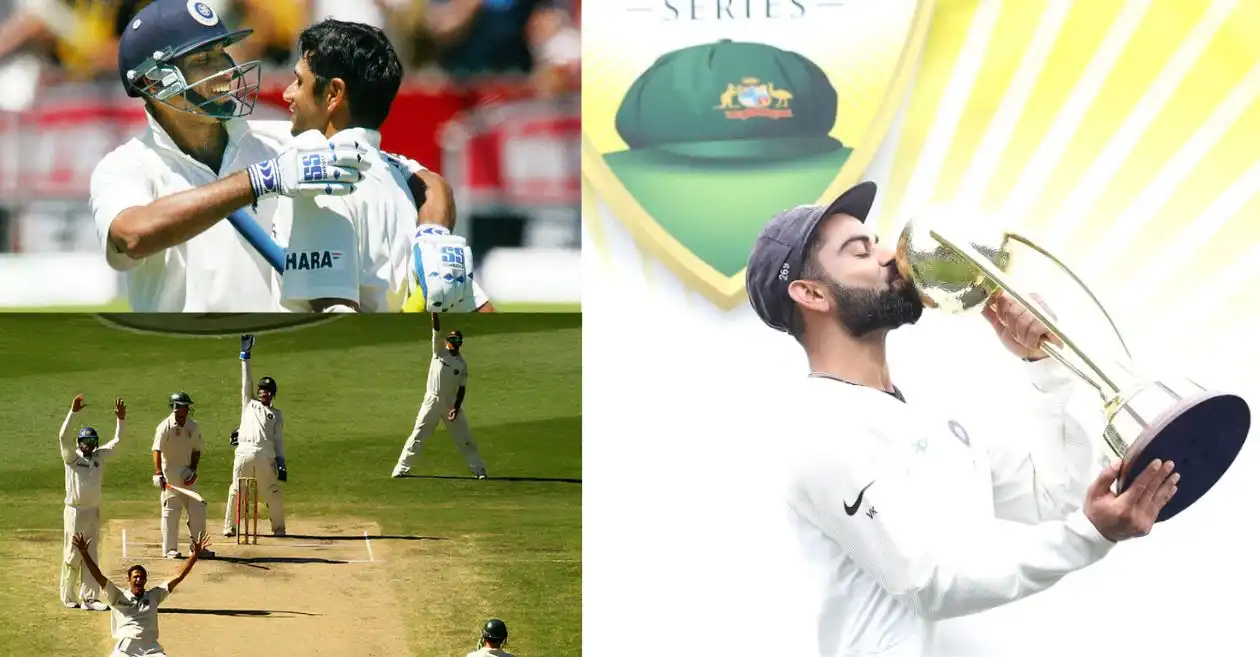Table of Contents
Team India‘s cricketing journey in Australia has been a story of gradual evolution, with the team facing early challenges but gradually growing in stature on Australian soil. While the early years were dominated by Australian supremacy, especially with their formidable pace attacks and the aura of players like Sir Donald Bradman, India’s competitiveness began to show in the 1980s and 90s. Over the years, the Indian team has transformed, and with each visit to Australia, they have shed their underdog status. The Indian team’s success in Australia now represents one of the most compelling chapters in the history of Test cricket.
From historic first wins to unforgettable series victories, India’s achievements in Australia have become a point of pride. The development of a strong bowling unit, the rise of players who thrive in challenging conditions, and the strategic leadership have all contributed to India’s growing success in the land of the Kangaroos. While the journey hasn’t been without its challenges, India’s consistent progress on Australian soil showcases their rise as a major force in world cricket.
Now, let’s explore how the Indian team has navigated through these challenges and emerged stronger over time.
India’s flare in Australia in Test cricket
The early struggles
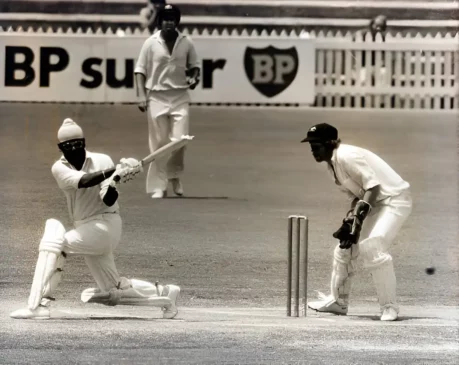
India’s initial encounters in Australia were marked by considerable struggles. Their debut Test series in 1947-48 saw a comprehensive 4-0 defeat, with the Indian team failing to make an impact against a dominant Australian side. This early period in Indian Test cricket was characterized by difficulties adapting to Australia’s fast and bouncy pitches, as well as an inability to counter the aggressive Australian cricketing mindset.
Throughout the 1950s and 60s, India failed to register any significant victories, and by the 1970s, it was evident that the Indian team still lacked the firepower to compete with Australia’s cricketing giants. The absence of a world-class fast-bowling attack and a dependence on spin bowling in conditions that favored pace bowlers made India’s task even harder. The team had to rely on individual brilliance, but a collective effort was often missing.
Building momentum from the 1980s era
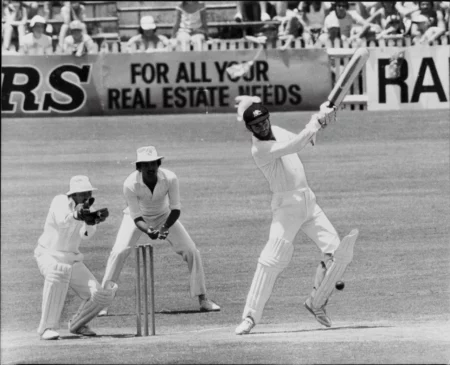
The early 1980s marked a turning point for India in Australia. The 1980-81 series saw India secure their first Test win in Australia, although it was not part of a series victory. Gundappa Viswanath‘s fighting ton and Kapil Dev‘s incredible spell of fast bowling, where he led India to a thrilling win in Melbourne, gave the team and their supporters a glimpse of India’s potential.
In the 1985-86 series, India managed to draw the series 0-0, a significant improvement given the tough Australian conditions. Though they couldn’t win, the Indian team displayed resilience and competitive spirit, particularly through the efforts of their batters and Kapil’s leadership. The 1991-92 series was another tough battle, where despite individual contributions, India lost the series 4-0. However, the team’s performance continued to evolve, and the emergence of players like Mohammad Azharuddin and Sachin Tendulkar showcased India’s growing potential.
The 1999-2000 series, although a 3-0 loss, saw the rise of players like Sourav Ganguly and Rahul Dravid, whose resilience would later contribute significantly to India’s success in Australia. These series laid the foundation for the eventual triumphs that would come in the new millennium.
Also READ:AUS vs IND 2024: Virat Kohli reveals his favourite knock in Australia
The golden period under Sourav Ganguly and Rahul Dravid
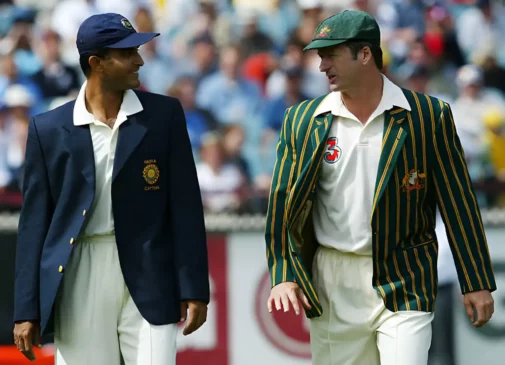
India’s success in Australia during the early 2000s laid the foundation for their future victories. Under the leadership of Ganguly, India started to play with a sense of confidence and aggression. The 2003-04 series was significant because it showcased the Indian team’s ability to compete on Australian soil, with remarkable batting performances, particularly from Dravid, who ended the series as the highest run-scorer.
India drew the series 1-1, with a standout performance from Dravid, who scored centuries in Adelaide and Melbourne. This was one of the first series where India’s team showed a genuine competitiveness, especially with the rise of the young players like Virender Sehwag, and a more balanced approach to fast and spin bowling.
The 2007-08 series, though a difficult one for India with the controversies surrounding the Sydney Test, also witnessed Indian players like Anil Kumble and Tendulkar shining. Although India didn’t win the series, it was clear that the team was now a formidable opponent. The spirit displayed in these years set the stage for the monumental Test victories that would follow in the next decade.
The beginning of India’s transformation under Virat Kohli
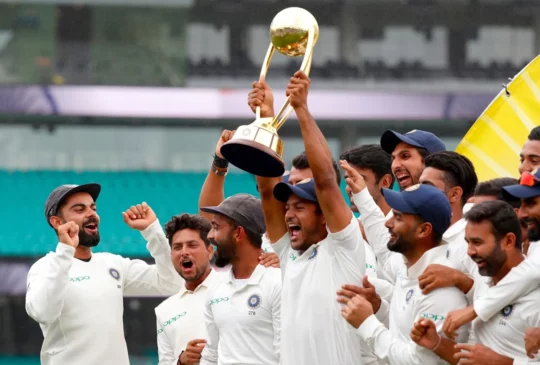
The 2010s were a transformative period for India’s Test cricket team in Australia. The journey, however, wasn’t without its struggles. In the 2011/12 series, India faced a crushing 4-0 defeat, where Australia dominated the entire series. Despite individual performances, India struggled to adapt to the hostile Australian conditions, particularly against the pace attack and the Australian batting line-up. Similarly, in the 2014/15 series, India again lost 2-0, as Australia’s fast bowlers and a resurgent Michael Clarke led the charge. Despite some brave efforts, especially by Virat Kohli, who scored heavily, India fell short in both series, highlighting the gaps in their ability to consistently challenge Australia in their own backyard.
However, the tide began to turn in the 2018-19 series, where India achieved their first-ever Test series win in Australia, defeating the hosts 2-1. Kohli’s leadership, combined with remarkable batting performances by Cheteshwar Pujara and outstanding fast bowling from Jasprit Bumrah, Mohammed Shami, and Ishant Sharma, led to this historic success. This victory marked a significant turning point, demonstrating India’s growth as a global cricketing power and their ability to adapt to Australian conditions.
The 2020-21 series further cemented India’s position as a Test cricket powerhouse. With a depleted squad and the absence of key players like Kohli following India’s embarrassing show at the Adelaide, Ajinkya Rahane‘s leadership saw India create history by winning the series 2-1. The final Test at the Gabba, where India chased down a steep target in dramatic fashion, broke Australia’s 32-year unbeaten record at that ground, marking a historic moment in Indian cricket.
